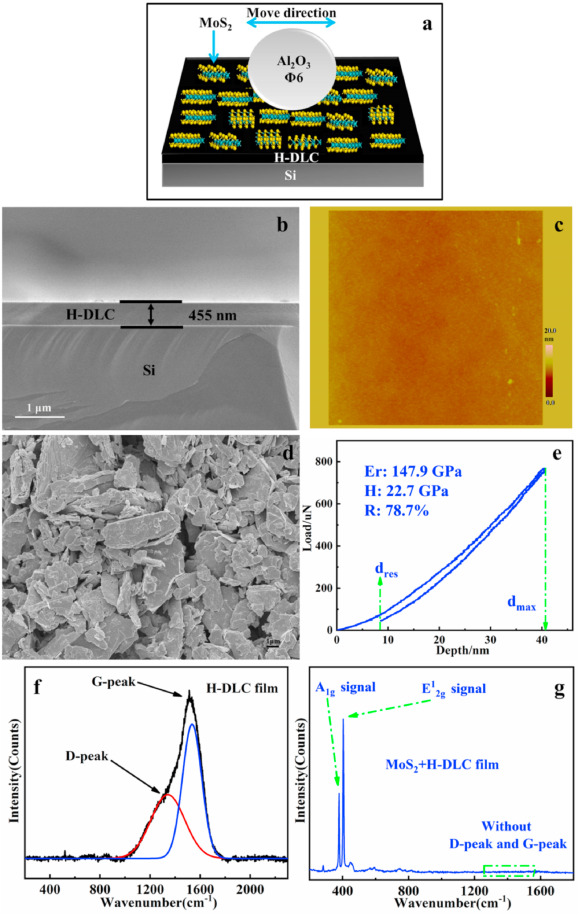Abstract
The achievement of superlow friction in moving parts in air can significantly reduce energy consumption. Hydrogenated diamond-like carbon, the most promising superlubric materials which can be applied in mechanical system, was investigated extensively in the past decades. Nevertheless, it is still challenging for hydrogenated diamond-like carbon to achieve superlow friction in moist air. Moreover, some novel and simple strategies to establish superlow friction are desired to be developed for the film in open air. In this paper, a composite structure was simply obtained by depositing MoS2 flakes on H-DLC film by means of drop-casting process. The results showed that MoS2 flakes could effectively suppress the energy dissipation and reduce the friction during the sliding process. Macro-scale superlow friction could be achieved with a coefficient of friction as low as 0.005 in air with a relative humidity of 24 +/- 2%. The results indicated that with the introduction of MoS2 flakes, the carbon transfer film/hydrogenated diamond-like carbon contact was evolved into a self-organized and highly ordered MoS2 transfer film/hydrogenated diamond-like carbon heterogeneous contact. The heterostructure leaded to incommensurate contact between the frictional interfaces, resulting in reducing the friction in order of magnitude and establishing superlow friction during the rubbing period.

Published in CERAMICS INTERNATIONAL,Volume 47;10.1016/j.ceramint.2020.12.219,APR 15 2021


